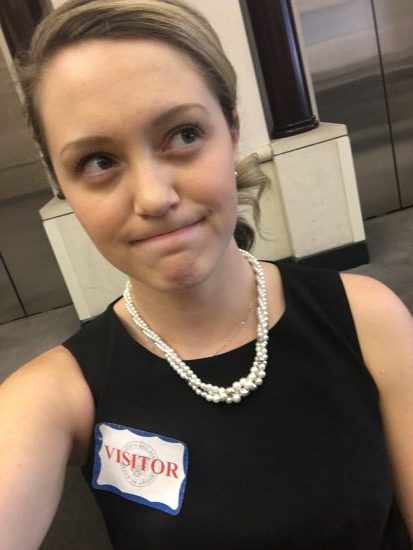Want to Find Out What’s Going on at the AZ Supreme Court? Good Luck with That.
By Christy Allen
August 16, 2018

The Arizona Supreme Court is responsible for some of the most important legal questions in the lives of 7 million Arizonans. But if you want to find out what’s happening there, it’s not so easy. In fact, it’s downright cumbersome. One job Goldwater Institute law clerks do is follow ongoing litigation—so follow me as I describe just how hard that is to do at the state’s highest court.
First, you’ll want to know what cases are currently filed at the court. You might think you could check the website. But no; the Arizona Supreme Court’s website contains no such information. If you happen to know that Division One of the Arizona Court of Appeals maintains an online, up-to-date list of filings at the Arizona Supreme Court, you can find the names of the parties asking the Supreme Court to decide their case. But if you want to know what people are asking the Arizona Supreme Court to decide, you’ll have to get in your car, and drive to the Court in downtown Phoenix (for all intents and purposes, inaccessible to many thousands of Arizonans) and research each specific case at a computer terminal available to the public. Of course, you have to hope that no one else wants to use the computer—because there’s only one. And it doesn’t always work correctly.
I wanted to begin this blog post in a more interesting way, perhaps comparing this experience to something else in modern life. But I can’t even come up with one. There are few instances of such an archaic process left in this world of Amazon Prime and Google.
But I’m not just some impatient millennial complaining about the Arizona Supreme Court’s antiquated procedures. As a law clerk, I was tasked this summer with collecting the “questions presented” of all cases filed at the Arizona Supreme Court, so that the Institute could file amicus briefs in appropriate cases. The way Arizona Supreme Court rules work, amicus briefs have to be filed very rapidly—before the Court agrees to hear the case, in fact. And there’s no way to find out what issues are before the Court except to go to the courthouse and look at the public terminal.
So, each Friday afternoon this summer, I drove three miles to the Court, made my way through security and up to the fourth floor Clerk’s office. Occasionally, I’d have to wait for the computer, or wait because the outdated machine often produces only the infamous Spinning Wheel of Death.
Each time I made this trip—whether it proved fruitful or not—was time I could have spent more productively. More importantly, Arizonans should be better informed about what’s going on at the state Supreme Court. SCOTUSblog and other websites maintain up-to-date information about developments at the U.S. Supreme Court, and the Arizona court system often prides itself on transparency, even allowing people to tweet from the courtroom during hearings. But when it comes to petitions for review in the Arizona Supreme Court, that information isn’t available. And that’s important because, as I’ve said, the Court can take and decide a case without even telling the public that it’s been asked to do so. That’s why the Court should modernize and digitize all publically available parts of court records. The media, taxpayers, and other interested parties would benefit from the convenience and transparency that such improvements would bring.
Rule 123 of the Arizona Supreme Court says that the Court maintains an “open records policy” because “this state has always favored open government and an informed citizenry.” Indeed, “all case records are open to the public except as may be closed by law.” But “open” does not necessarily mean “accessible,” and when they’re as inaccessible as the Arizona Supreme Court’s are, that largely renders the promise of an open records policy null and void.
In fact, Court rules already provide for “remote electronic access to case records” for certain kinds of interested parties. Thus, there is no conceivable reason not to put petitions for review—which are (usually) public, non-confidential records online for convenient remote access.
Now that briefs are so routinely filed electronically anyway—and petitions for review are already digitized for access on the single public terminal the Court uses—it’s doubtful that this would impose any significant cost on the courts. But even if it did, the cost is well worth it. If Arizona is serious about its open records policy, it should ensure that that policy translates into practical access.
It was nice to get to know the Court’s security guards this summer (hi, guys!), but it’s long past time for the Arizona Supreme Court to follow its pledge to provide public access to court documents by making petitions for review available online.
Christy Allen is a Ronald Reagan Fellow and law clerk at the Goldwater Institute.
Get Connected to Goldwater
Sign up for the latest news, event updates, and more.
Recommended Blogs

Donate Now
Help all Americans live freer, happier lives. Join the Goldwater Institute as we defend and strengthen freedom in all 50 states.
Donate NowSince 1988, the Goldwater Institute has been in the liberty business — defending and promoting freedom, and achieving more than 400 victories in all 50 states. Donate today to help support our mission.

We Protect Your Rights
Our attorneys defend individual rights and protect those who cannot protect themselves.
Need Help? Submit a case.


